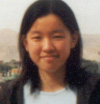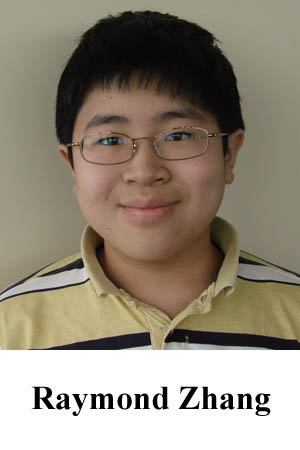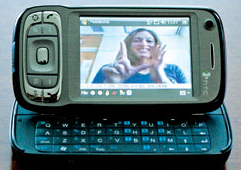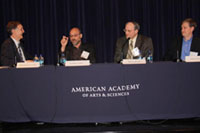 In a story in the Novelties column on the New York Times, reporter Anne Eisenberg looks at work that’s being done to entirely eliminate batteries from very low-power wireless systems.
In a story in the Novelties column on the New York Times, reporter Anne Eisenberg looks at work that’s being done to entirely eliminate batteries from very low-power wireless systems.
UW Electrical Engineering Professor Brian Otis explained that researchers are working on the problem from two directions, and are now starting to meet in the middle, delivering practical applications. His work is on reducing the amount of power such systems require, while others, such as UW CSE affiliate professor Joshua Smith, are working on harvesting useful amounts of power from ambient radiation.
Smith, who is a principal engineer at Intel Labs Seattle, and his research collaborators have demonstrated a system that harvests enough power from a nearby television broadcast station to run a simple wireless weather station. Says Smith, “Silicon technology has advanced to the point where even tiny amounts of energy can do useful work.”
Read the full story at the New York Times online here. CSE News earlier reported on media coverage of Smith’s work here. Read more →
 More than a century ago, a startup— funded by J. P. Morgan with technology from Nikola Tesla— envisioned a future where energy would be delivered over the air from power stations to consumers. That vision wasn’t realized, but now researchers have revived the vision on a nano scale.
More than a century ago, a startup— funded by J. P. Morgan with technology from Nikola Tesla— envisioned a future where energy would be delivered over the air from power stations to consumers. That vision wasn’t realized, but now researchers have revived the vision on a nano scale.
The Economist reports on research by Josh Smith (UW CSE adjunct faculty and principal engineer at Intel Labs Seattle) with collaborators Scott Southwood (UW CSE undergrad) and Alanson Sample (a researcher at UW Electrical Engineering and at Intel Research Seattle) demonstrating practical application of Tesla’s idea. The researchers have successfully powered a simple weather station using power harvested from “ambient energy” such as that harvested from a television broadcast tower several miles away.
“There is something magical about it,” says Smith, but the science is sound.
Other researchers are already looking at commercial applications of power-harvesting technologies, such as using WIFI signals to charge cellphones.
Read the story at The Economist here. Or view the ten-minute video. An interview with UW researchers starts at about the five-minute point.
Update: The New York Times also reports on Smith’s work in the Novelties column,
Bye-Bye Batteries: Radio Waves as a Low-Power Source, on 16 July 2010. Read more →
 Several families of blue herons are nesting this spring in the Sylvan Grove, which the Paul G. Allen Center for Computer Science & Engineering overlooks. From the sixth floor, one nest in particular is easily visible, and neither the proud parents nor the nestlings seem to mind if we monitor their progress. And monitor it we are:
Several families of blue herons are nesting this spring in the Sylvan Grove, which the Paul G. Allen Center for Computer Science & Engineering overlooks. From the sixth floor, one nest in particular is easily visible, and neither the proud parents nor the nestlings seem to mind if we monitor their progress. And monitor it we are:
1. Point your web browser at www.cs.washington.edu/heroncam to get a live view of the nest from our cambot.
2. CSE faculty member Bruce Hemingway, our unofficial department photographer, has created and is continuing to add to a wonderful photo album of high-quality photographs. Click on the image at right to visit it.
3. For those of you on a multicast-capable “research network” (all of UW, plus some large companies, but probably not your home internet service), CSE staff member Fred Videon has established a stunning hi-def video feed. To view the feed, you might use the free VideoLAN Project vlc program. (1) Select Media:Open Network Stream. (2) Select UDP as the stream, enter 233.0.73.67 as the IP address, and use port 1234 (the default). (3) Press “play.”
Those of us with upper-floor offices facing the Grove are having a lot of fun watching the nestlings and their proud parents, and we invite everyone in the CSE community to join us. Read more →
 Technology Review looks at Microsoft’s cherry new search engine, Bing, and turned to CSE web search expert Dan Weld for his take.
Technology Review looks at Microsoft’s cherry new search engine, Bing, and turned to CSE web search expert Dan Weld for his take.
“Bing is a limited start, but for a reasonable set of queries, it is better.” But there’s still plenty of room for both search leader Google and Bing to improve. “Search can and will get much, much better,” says Weld.
Read the full article here. Read more →
 UW CSE PhD candidate Saleema Amershi has been awarded a 2009 Google Anita Borg Memorial Scholarship, awarded each year to female computer science students selected on the basis of academic excellence and leadership. The scholarships, which carry an award of $10,000, celebrate the life’s work of the late Anita Borg. Saleema works in the areas of HCI and machine learning.
UW CSE PhD candidate Saleema Amershi has been awarded a 2009 Google Anita Borg Memorial Scholarship, awarded each year to female computer science students selected on the basis of academic excellence and leadership. The scholarships, which carry an award of $10,000, celebrate the life’s work of the late Anita Borg. Saleema works in the areas of HCI and machine learning.
UW CSE PhD candidate Kristi Morton and undergraduate Julia Schwarz were finalists, each earning an award of $1000.
Read about the 2009 US winners and finalists in this post on the Google Student Blog. Read about our two 2008 awardees here. Read more →

A paper co-authored by UW CSE post-doctoral researcher Wenjun Hu has won the 2009 William R. Bennett Prize, given annually by the IEEE Communcations Society to the best paper published in IEEE/ACM Transactions on Networking in the preceding calendar year.
The paper, XORs in the Air: Practical Wireless Network Coding proposes COPE, a new architecture for wireless mesh networks that uses network coding techniques to increase throughput.
A UW CSE paper also won the 2005 William R. Bennett Prize: Rocketfuel, co-authored by Neil Spring, Ratul Mahajan, David Wetherall, and Tom Anderson. Read more →
 On April 15, ABC News’ Nightline television program took a look a the UW’s “genius school” for thirteen-year-old gifted students, who enter the University of Washington as fourteen-year-old freshmen after participating in the year-long program. UW CSE student Raymond Zhang, whose parents moved here from New Jersey so that he could participate, is interviewed.
On April 15, ABC News’ Nightline television program took a look a the UW’s “genius school” for thirteen-year-old gifted students, who enter the University of Washington as fourteen-year-old freshmen after participating in the year-long program. UW CSE student Raymond Zhang, whose parents moved here from New Jersey so that he could participate, is interviewed.
View the 7:40 video here. Read more →

Photo: Mary Levin
Columns, the magazine of the University of Washington Alumni Association, reports on the long and fruitful work that Boeing Professor in Computer Science and Engineering Richard Ladner has done making technology and opportunity more available to blind and deaf people.
Dr. Ladner had two deaf parents, which helped him understand the challenges faced by those with sensory disabilities and motivated him to work to help lower barriers
A notable project to come out of Ladner’s advocacy work is WebAnywhere (previous CSE News reporting here), which allows blind users to have web pages read to them using a standard PC, eliminating the requirement for an expensive “screen reader” program. This project is developed by CSE PhD student Jeffrey Bigham. Another is MobileASL (previous CSE News reporting here), a collaboration with Electrical Engineering professor Eve Riskin, which allows deaf users to have American Sign Language conversations using unmodified cellphones. Another: the cross-disciplinary Tactile Graphics project, which has developed software to speedily create tactile versions of visual graphics, which are accessible to unsighted users.
Read the full article here. Read more →
 TechFlash contributor Roni Ayalla reports on recent developments with UW CSE graduate student Brian Ferris‘ OneBusAway project. The open-source project now has a home at Google Code, is seeking grant funding, and has attracted faculty sponsorship from UW CSE’s Alan Borning, one of the principal investigators on the cross-disciplinary Urbansim Project. Ferris is quoted
TechFlash contributor Roni Ayalla reports on recent developments with UW CSE graduate student Brian Ferris‘ OneBusAway project. The open-source project now has a home at Google Code, is seeking grant funding, and has attracted faculty sponsorship from UW CSE’s Alan Borning, one of the principal investigators on the cross-disciplinary Urbansim Project. Ferris is quoted
We’re working on building a complete open-source transit traveler information system that would combine route maps/timetables, trip-planning, real-time tracking, and real-time service alerts … into a user-friendly package that would be accessible across the web, phone, Twitter, whatever. Basically, (OneBusAway) to the next level.
We’ve reported on press coverage of OneBusAway several times.
[Update 4 March: follow OneBusAway on twitter here. -SMR]
[Update 7 March: OneBusAway was covered on WorldChanging Seattle. -SMR] Read more →
 CNET News reporter Charles Cooper reports in his Coop’s Corner blog on a panel that looked at the impact of information technology on democracy. UW CSE professor Ed Lazowska organized the panel, which included Princeton University professor and 1993 UW CSE PhD Ed Felten and two others. The panel was held as part of a meeting of the American Academy of Arts & Sciences exploring the information technology and the public good.
CNET News reporter Charles Cooper reports in his Coop’s Corner blog on a panel that looked at the impact of information technology on democracy. UW CSE professor Ed Lazowska organized the panel, which included Princeton University professor and 1993 UW CSE PhD Ed Felten and two others. The panel was held as part of a meeting of the American Academy of Arts & Sciences exploring the information technology and the public good.
Ed Felten offered some hopeful comments:
There will be many fewer newspapers…partly due to fact that people can read newspapers from far away. We’ll see smaller outlets which focus on the local and operate in a low-budget way, more like a community paper than a big city newspaper. And we’ll see a lot of non-profit or low-profit punditry.
Read more →
 In a story in the Novelties column on the New York Times, reporter Anne Eisenberg looks at work that’s being done to entirely eliminate batteries from very low-power wireless systems.
In a story in the Novelties column on the New York Times, reporter Anne Eisenberg looks at work that’s being done to entirely eliminate batteries from very low-power wireless systems.




 UW CSE PhD candidate
UW CSE PhD candidate 
 On April 15, ABC News’ Nightline television program took a look a the UW’s “genius school” for thirteen-year-old gifted students, who enter the University of Washington as fourteen-year-old freshmen after participating in the year-long program. UW CSE student Raymond Zhang, whose parents moved here from New Jersey so that he could participate, is interviewed.
On April 15, ABC News’ Nightline television program took a look a the UW’s “genius school” for thirteen-year-old gifted students, who enter the University of Washington as fourteen-year-old freshmen after participating in the year-long program. UW CSE student Raymond Zhang, whose parents moved here from New Jersey so that he could participate, is interviewed.

